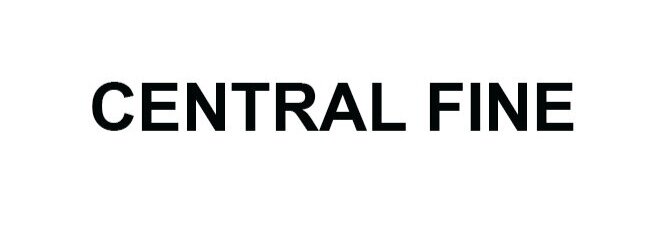VIKTOR EL-SAIEH. TET CHAT
June 5 – July 10, 2016
Opening on Sunday, June 5 from 4-9PM
“Charles Oscar Etienne was the head of the national police [in Haiti] during the presidency of Vilbrun Guillaume Sam who was the 7th president to hold office between the period of 1911–1915. Sam was overthrown and Charles Oscar murdered 150 political prisoners immediately, just before he himself was brutally murdered. The U.S. occupation of Haiti soon followed and it would last until 1934. I am not sure when but eventually Charles Oscar became ‘Chaloska’ and he emerged as a character in the Haitian Carnival—particularly in the southern town of Jacmel.”
Viktor El-Saieh’s first solo show at CENTRAL FINE could perhaps show a painter/dreamer that observes the dramatic act of dreaming/painting. The painter here is an actor that unfolds into a script-writer, a performer, a narrator and a character. Just like in a dream, where there’s no end and no beginning1 , the work moves from historical events into poetic re-presentations of what happened through the lens of fiction and commentary. ‘Tet chat (cat’s head)’ is a slang phrase in Haiti used to describe something unfinished, or in a state of becoming (perhaps something poorly assembled, at risk of falling apart). This precarious assemblage—like interpretation and memory, and their gaps, lagoons and parentheses—faces us with painting as an act that interweaves its own history within a vast network of associations (political, poetic, art-historical, etc.). Moreover, the title points to a relationship with nature, which predominantly appears in Haitian painting, signaling the link between man, myth, and nature as a given.
The role of the painter as a script-director and a career-driven politician brings to mind the current state of affairs where paternal figures have fallen and a new type of archetypical sign appears: the monster appealing to violence, to emotions and the eradication of reason (understanding this as the cliché of seeing reason as an offspring of paternal predominance). Of note here, and moving beyond the narrative, we see El-Saieh’s works as a series of positions that address painting’s status through a ‘landscape’. Painting here is acutely aware of its capacity to act as a performative-political text and to embody the drama involved in its making. Painting, like Chaloska, could be an avatar that is sustained in a threshold where its relevance is no longer discussed, where its allegorical, visual and political power imbues every texture and form with the forces that meet on the picture plane.
Chaloska the agitator, the criminal, is a monstrous footnote in these canvases, and embodies what El-Saieh calls, “the capacity for violent explosion that Haiti holds within.” Chaloska, the zombie, preternaturally alive as a recurrent figure in the Haitian Carnival, is a medium here, a channel and a quotation on violence that holds a built-in criticism directed towards its core and the conditions that generated it. This can be extrapolated to the state of criticism collapsing into the surface of painting, reflecting on the medium and its pulse as an effect of that meeting.
With criticality built-in, painting, like Chaloska, could be a medium kept alive beyond politically driven death-proclamations. This super-charged drama is enacted by a sensitive use of color and the activation of negative spaces and their tension, presenting a mise-en-scène where narration evokes the monstrous and moves beyond nostalgic commemorations straight into the scene of the painter as a director of relationships and as a magnifier of their forces.
Diego Singh, Miami, May, 2016.
Viktor El-Saieh was born in Port-au-Prince, Haiti in 1988. He has a BA in international affairs from the University of Miami and studied painting at the André Pierre Studio in Port-au-Prince. His work has been exhibited at Locust Projects, Miami; David Castillo Gallery, Miami; and El-Saieh Gallery, Port-au-Prince, among others.
This is Viktor El-Saieh’s first solo exhibition at CENTRAL FINE.
1 Madonna and Patrick Leonard: “Like a Prayer,” Like a Prayer, Sire Records, March 3, 1989.










